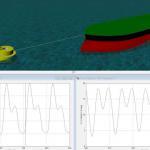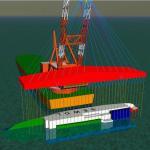[Posted on November 9th, by Bill Stewart]
Single point moorings can be an effective means of dealing with liquid cargo. The floating buoy can be an alternative to an anchor or used in conjunction with one. Depending upon the facility, it is capable of handling even the largest of vessels – though there are things to know about the moorings before you arrive on the spot.
Type of Anchor Point
There may be sub-oil and sub-sea pipelines that are connected to the single point moorings and if you are going to anchor near the moorings, you need to be aware of the situation ahead of time. Having the necessary anchor capacities will be a must when you approach and once you are out on the water, changing out an anchor is impossible. This means that it can work to your advantage to have anchor analysis done prior to leaving the shore.
Load Capacity
Single point moorings, often abbreviated as a SPM, are used most often when there is no dedicated facility for loading and unloading cargo. If you are in the gas and oil industry, you already know what kind of capacity you have and are in need of – and if you don’t, analysis can be done to find out. This will ensure the mooring is capable of meeting your needs. If it is not, then you would have to continue on where a dedicated facility is located to help you with the loading and unloading of petroleum or any other liquid cargo.
Dominant Environment
What kind of environment are you going into? A significant amount of analysis needs to be done to determine what your rig can handle based upon the waves, the general offshore operations, and everything else. Some environments will call for more than just the SPM based upon your own rig.
Fluid Transfer Paths
There are going to be fluid transfer paths to consider with a mooring. Understanding the diagram of the mooring prior to arrival is critical. This will help you to understand placement of the buoy, the pipeline manifold, as well as the underbuoy hoses. Once the fluid transfer path is clear, you can decide if it is enough for you. Smaller vessels may be able to choose between an anchor or mooring, but with larger rigs, such as a tanker vessel, it is likely that you will need both.
Full Capabilities
Ultimately, you need to know about the full capabilities of the mooring prior to arrival. Ideally, one has been custom built for you, but this is not always the case. As a result, it is imperative that you talk to someone who is knowledgeable about the SPM. Any analysis that can be done on the mooring in conjunction with your rig prior to going offshore is going to make great improvements and allow you to prepare your staff for what they will be up against.









